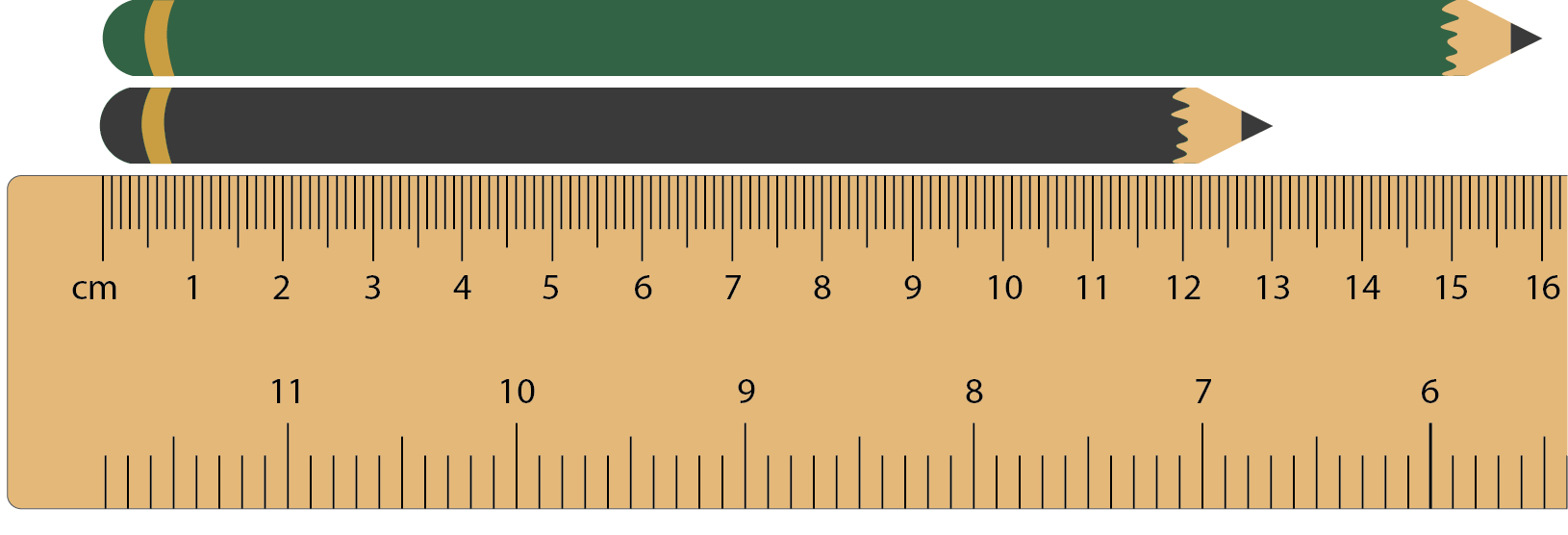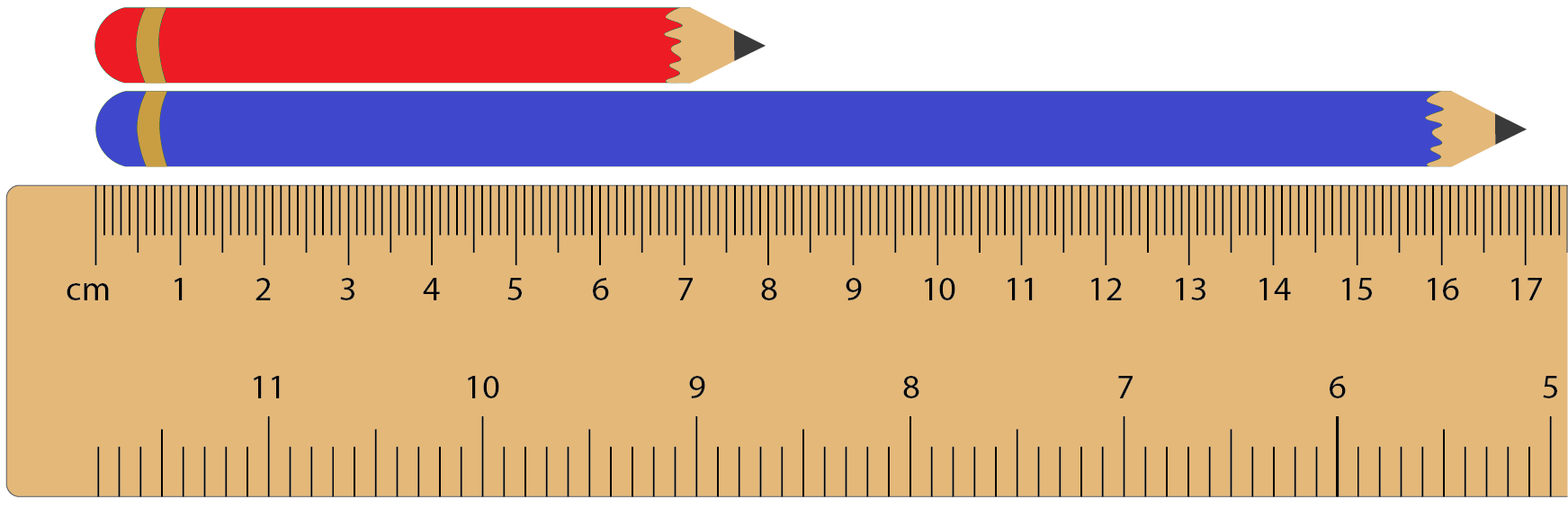Purpose
The purpose of this activity is to support students correctly combining and comparing measurements of length.
Achievement Objectives
GM2-1: Create and use appropriate units and devices to measure length, area, volume and capacity, weight (mass), turn (angle), temperature, and time.
Required Resource Materials
- Objects suitable for measuring length in centimetres, such as pencils, crayons, or feet. These could be reflective of a context that is relevant to your students' cultural backgrounds, interests, and learning from other curriculum areas.
- Rulers
Activity
- Introduce two of the same kind of objects to be measured. They should be different in length, but should both have lengths that are whole numbers of centimetres. Throughout this activity, pencils are used as an example.
- Ask the students to tell you how to use a ruler to measure the length of the two pencils separately. Look for them to pay attention to the unit and baseline. Use the ruler to measure the pencils and record the measurements for students to use. You might also record some "guidelines for measuring" if your students are unfamiliar with what needs to be done to measure accurately.
- Pose problems where pencils are placed end on end and the total length predicted. Within this task, consider what groupings will best encourage tuakana-teina and productive learning conversations. It also might be appropriate for some students to work independently, whilst others might benefit from further teacher support.
If we put the two pencils end-on-end what will the total length be?
Look for students to recognise that the measurements of each pencil can be added together to give the total measure.
Encourage students to express their mathematical thinking in different ways (e.g. written equations and sentences, verbal statements, drawn diagrams, acting out, using physical manipulatives).

- Pose problems that require students to find the difference in length between two pencils, such as how much longer is the long pencil than the short pencil?
Look for students to recognise that the problem can be solved using adding on, as in 8 + □ = 17, or by taking away (subtraction), as in 17 – 8 = □.
Encourage students to express their mathematical thinking in different ways (e.g. written equations and sentences, verbal statements, drawn diagrams, acting out, using physical manipulatives).
Next steps
- Pose problems where the physical objects are not present but can be revealed to check answers, such as:
- The tennis bat is 35 cm long and the hockey stick is 85 cm. What is the total length if the two items are put together end on end?
- Mita’s shadow is 43cm long and Gracies’s shadow is 56cm long. How much longer is Gracie’s shadow that Mita’s shadow?
- Extend the problems to other objects in the room or the heights of students, such as:
- How many centimetres taller is Tania and Clint?
- How many of Josefa’s shoes would be the same length as our classroom?
- Extend students' understand of the linear scale by extending measurements to centimetres and metres. Look for students to use the marks on different measurement tools to identify mm, cm, and m metres, as opposed to solely relying on place value and conversion "rules".
Add to plan
Level Two